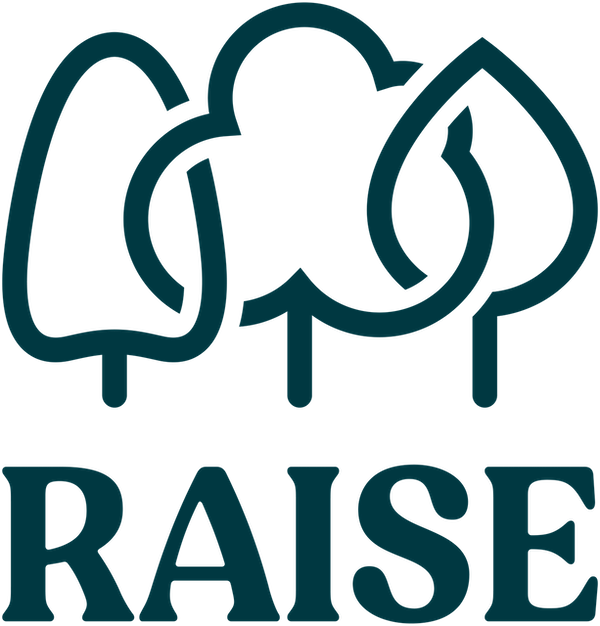Park House Farm

DATE:
2024 / 2025
LOCATION:
Park House Farm, Torpenhow
PARTNERS:
n/a
Case studies >> Park House Farm
Integrating trees into the farm system
Aims
Establish native woodlands on currently underutilised patches of the farm (1.4ha).
Create opportunities for immediate and ongoing engagement with local school children and members of the community through planting/maintentance days etc.
Create habitat corridors and increase biodiversity with a diverse mixture of native species planted.
Create future green/woodworking opportunities with establishment of coppice with standards.
The project at Park House Farm began in early 2021 when Jen, one of the farm’s owners, reached out to Raise Cumbria with an interest in implementing a wood pasture planting scheme. The initial planting took place in March 2021, and due to its success, the farm has undertaken additional plantings every year since. Now in its fourth year, the project continues to evolve with innovative agroforestry practices.
Raise’s guidance helped the farm identify suitable tree species and planting locations, providing practical knowledge and connecting them with resources to facilitate tree-planting efforts. The partnership has demonstrated that trees can be integrated into dairy farms without compromising productivity.
Jen and Mark’s transition to agroforestry was driven by their shift from intensive dairy farming to a more sustainable, organic, and 100% pasture-fed system. They observed that their cows naturally preferred foraging on trees and hedgerows rather than monoculture ryegrass, prompting them to rethink their approach to land and soil management. This led to a growing interest in integrating trees throughout their farm landscape.
The relationship with Raise has been critical to this success, allowing Mark and Jen to share their vision and collaborate with our woodland team to plan and implement their ideas. Despite having already planted large areas of wood pasture, their enthusiasm for trees on their farm continues to grow year after year.
With their goal of grazing cattle outdoors year-round, the fields are gradually transforming into a patchwork of trees and grazing areas. This approach provides cattle with diverse food sources, improves soil health, and offers natural shelter.
Soil health is a key focus of their vision, with trees playing a crucial role in enhancing soil structure and increasing grass production. In turn, this benefits the cattle as they rotate through the fields throughout the year. Mark and Jen also describe how integrating trees into their farming system has led to more nutrient-dense products, such as milk enriched with phytonutrients and Omega fats from the diverse forage.
This year also marked the introduction of alley cropping, where strips of trees were planted across the fields to create broad alleyways approximately 24 meters wide. These strips contain a mix of tree species aimed at promoting biodiversity, fruit production, and potential timber crops. The width allows machinery to cut the fields for silage, and the absence of fencing ensures that cattle can move freely across the land.
Crucially, this project has been a collaborative effort between Raise and the landowners, Mark and Jen. Their enthusiasm and openness to innovation have made Park House Farm a leading example of how trees can be successfully integrated into farm systems. As a result, their story is attracting interest from others, which they share through open days, events, and conferences.
Future plans include developing a classroom for visiting groups to expand their educational offerings. The scale of this project has also significantly contributed to increasing tree cover in the area, enhancing flood resilience, and promoting landscape-scale nature recovery.
112
Volunteers
2050
Number of trees
1.4
Hectares of woodland planted
Project Impact
Contribution to Net Zero:
Establishment of native mixed broadleaf woodlands and scrub, increasing carbon sequestration and storage.
2050 trees planted (equivalent of 1.4 hectares of woodland) across a 140-acre site.
Public access and community engagement:
Volunteer groups, community members and local schools involved in planting and maintenance days.
112 people from primary school age to over 70s.
Health and Wellbeing:
Volunteer groups and local schools involved with maintenance, involving 112 individuals in the establishment of a new community forest site.
Woodland and parkland-style planting will link up surrounding mature woodland.
Education and skills:
Employment of contractors in fencing and in coordination of planting new woodland with volunteers.
Opportunity for engagement on site through the teaching of traditional woodcraft skills.
This will include education on traditional woodland management and production of primary industry materials from coppice and standards.
Nature and Biodiversity:
Creating diverse wooded habitats, bolstering existing nature corridors and planting a diverse mixture (12 species) of native and naturalised trees and shrubs.








